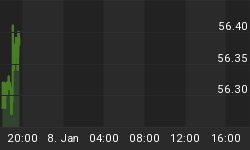The US dollar shows continued show signs of exhaustion despite evidence of consistent improvements in the job market and steady prospects of additional interest rate increases. This week's widely expected rate hike by the Fed will lift the fed funds rate to 3.50%, widening the dollar's yield differential to 150 bps, 100 bps and more than 300 bps against the euro, Canadian dollar and Japanese yen, while narrowing its rate disadvantage against the sterling and Aussie.
But it seems that currency traders are considering each rate hike to be one step closer to the end of the peak rather than an accumulation of the dollar's yield differential.
In theory, strong economic data and market expectations for at least 75 bps worth of tightening (including tomorrow) should be beneficial to the US dollar. But there are reasons why this is not the case; 1) An all round rally in commodities--which is partly triggered by geopolitical fears such as Thursday's broadcast of Al Qaeda's Al Zawahiri and partly by renewed bounce in oil prices; 2) Improved data in the Eurozone as seen in this week's improved services and manufacturing PMIs and last week's jump in Germany's IFO survey and greater than anticipated declines in unemployment; 3) Increased expectations of a looming end to Japan's deflation as signaled by BoJ's Fukui.
Trade deficit may temper rate hike effect
Another potentially fundamentally barrier for the dollar will be Friday's report on international trade which is expected the trade deficit to have risen to $58 billion. The 3% decline in the May trade deficit resulted from temporary stability in oil prices during the April-May period, which led to a 7% decline in imports of petroleum products and a 2.0% drop in imports of crude oil. Since prices of crude rose 25% from their April-May levels, we expect a rebound in oil imports to push the trade deficit further in the red, hence the $58 billion forecasts.
Speculators further reduce dollar longs
Speculators have steadily began to scale down their dollar longs over the past 4 weeks, and more specifically, EURUSD net shorts reached their lowest level in 3 months.
EURUSD shorts fell 97% to 191 contracts, attaining their lowest net short balance in 3 months. Net euro shorts had been rising and falling alternatively over the past 2 months as speculators began displaying hesitance whether to expand their selling of the euro currency. But the past 3 weeks saw a clear decline in euro shorts. Yen shorts fell 10% to reach a 6 week low. Speculators have been scaling down their yen shorts for the past 3 weeks, aiding the yen's recent ascent. Sterling shorts fell 15% to 16,979 contracts, showing their second weekly drop. Speculators have gradually leaned towards the notion that the British currency may have reached a somewhat oversold territory as expectations of a BoE rate cut may have reached their appropriate pricing trajectory. Swiss shorts fell 14% to 31,326 contracts, posting their third weekly consecutive decline. Net longs in the Canadian dollar dropped 31%, posting their second weekly drop, but the traders continued to remain net long in the loonie for the past 7 weeks. Aussie net longs edged higher less than 1% to 17,317 contracts. It's worth noting that speculators have consistently remained net long the Aussie over the US dollar throughout the year. The last week traders had been short the Aussie was in June 2004.
The chart below shows how real short-term interest rates (fed funds- annual core CPI) have tracked the monthly change in employment payrolls - as measured by the 3-month moving average. During the 1995-2000 period, the real fed funds rate closely tracked job creation until the tightening of summer 2000 helped prick the Internet bubble, and trigger the deteriorating bear market. Only when job creation started in spring 2004 could the Fed begin to "normalize" monetary policy.

Looking closely at the chart, one of the three conclusions can be drawn; 1) the real fed funds rate rises towards the 2.5% from its current 1.1% level in order to recapture the previous margin between real rates and payrolls; or 2) payrolls to weaken towards the 80K-130K range; or 3) the middle of the road scenario whereby real rates reach approximately 1.75-2.00% and average payrolls settle around the 150K - the current level of the 3-month average. For the real Fed funds rate to reach this 1.75%-2.00% range, the nominal Fed funds rate (Fed target) will have to reach 3.75-4.00% assuming core CPI remains near its 12-month average of 2.1%. The current showing of the US data and Fed rhetoric strongly suggests that the Fed funds rate will reach 4.00% by year-end, which implies the Fed will stand pat in one of the year's remaining 4 FOMC meetings. With next Tuesday's FOMC meeting seen producing a 3.50% fed funds rate, the Fed could tighten in September and November and step back in December.
Euro eyes 6th weekly gain
Despite Friday's stellar payroll report in the US, the euro is back to where it was prior to the jobs report standing at the $1.2370s. This is the longest winning streak for the single currency since November. Traders may take some gains off the table ahead of Tuesday's Fed rate hike, but such selling should be limited ahead of Friday's US trade deficit figure.
Euro faces support at $1.2310, followed by 1.2270-75 the previous trend line resistance now acting as a support. This territory could be a feasible entry point for euro bulls betting on renewed deterioration in US external woes. Resistance starts at 1.2360, followed by $1.2490-- the 61.8% retracement of the $1.3490-1.1866 move.
Best,
















